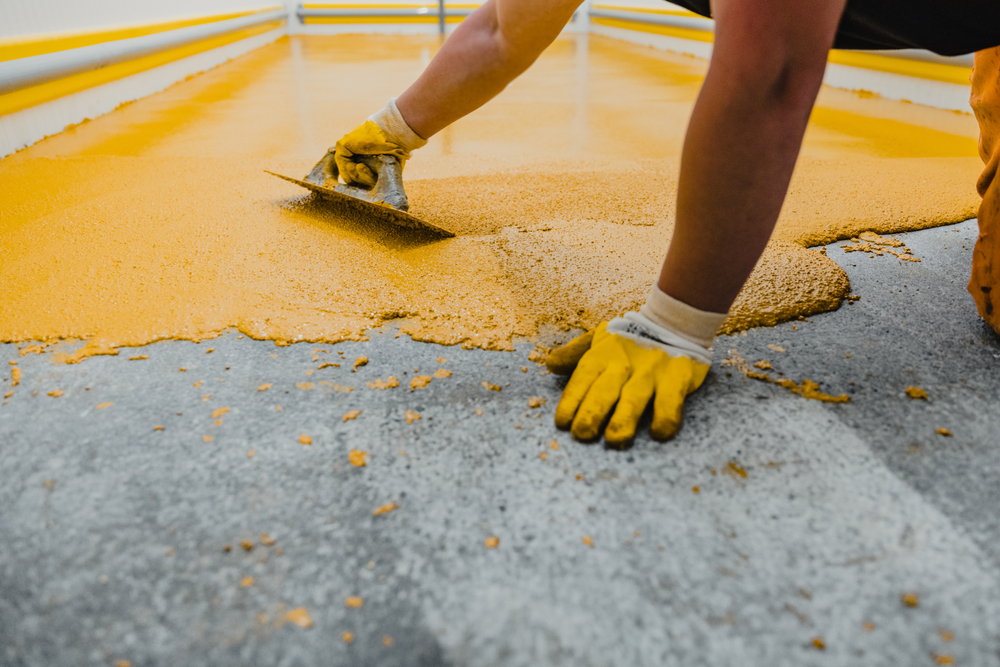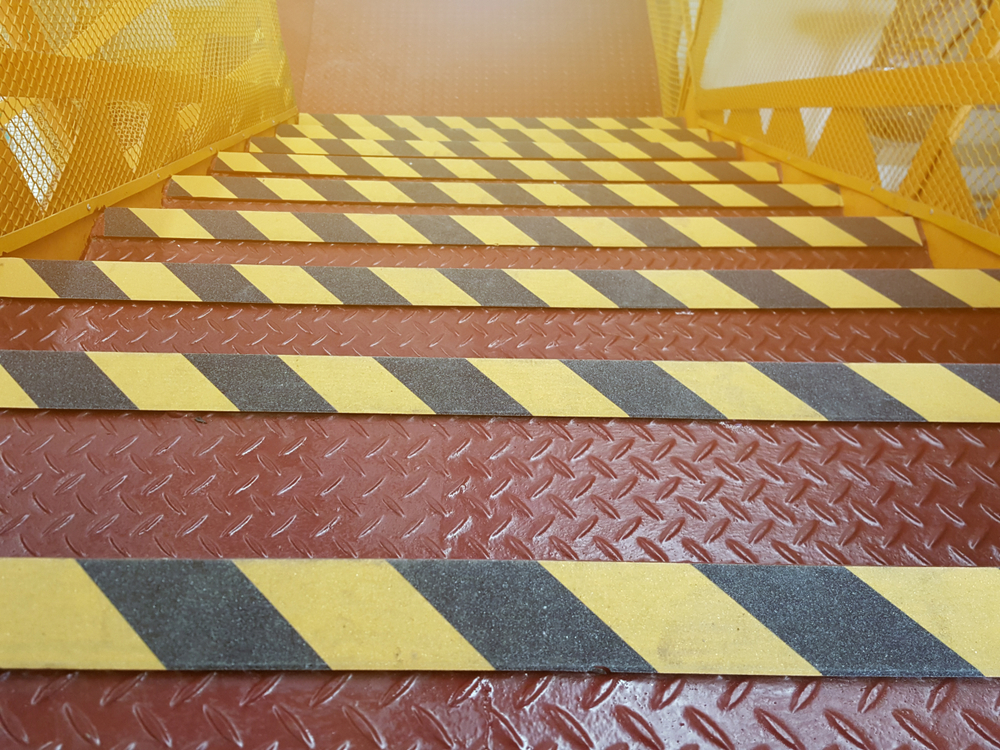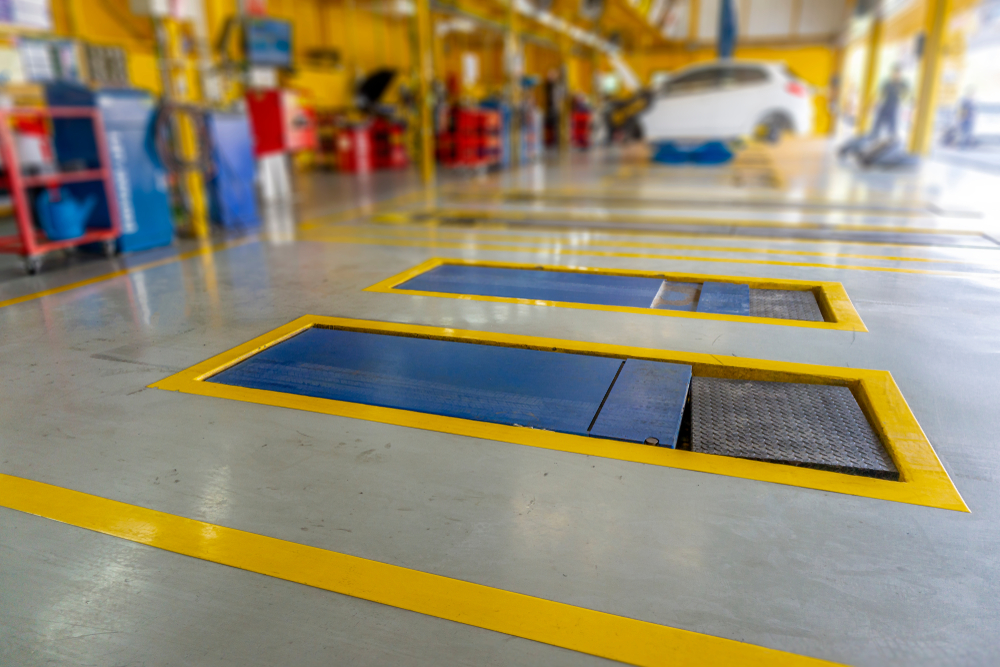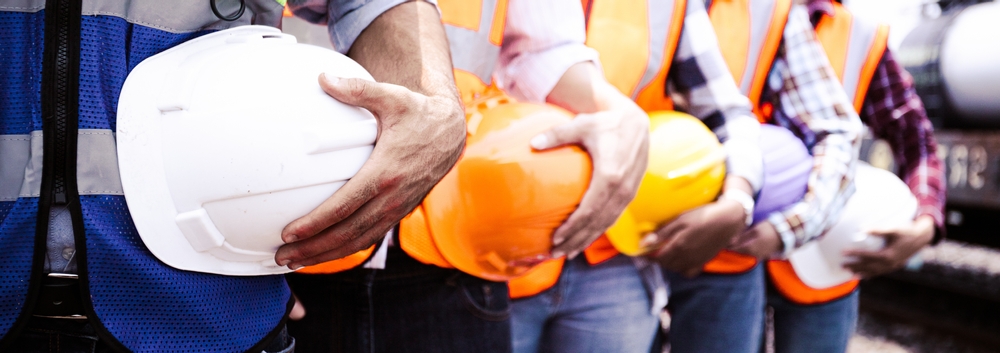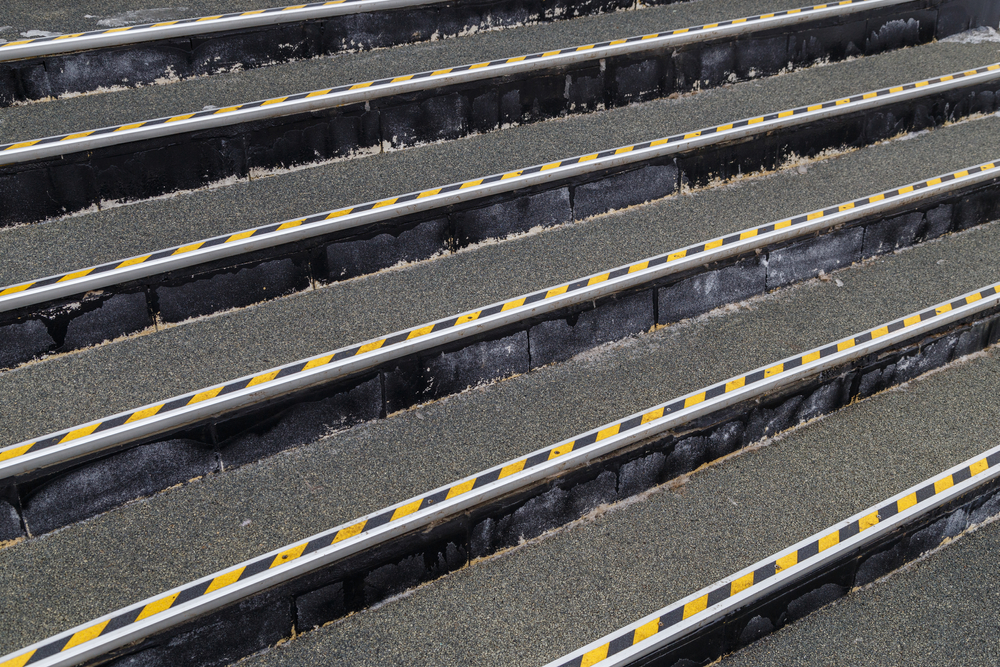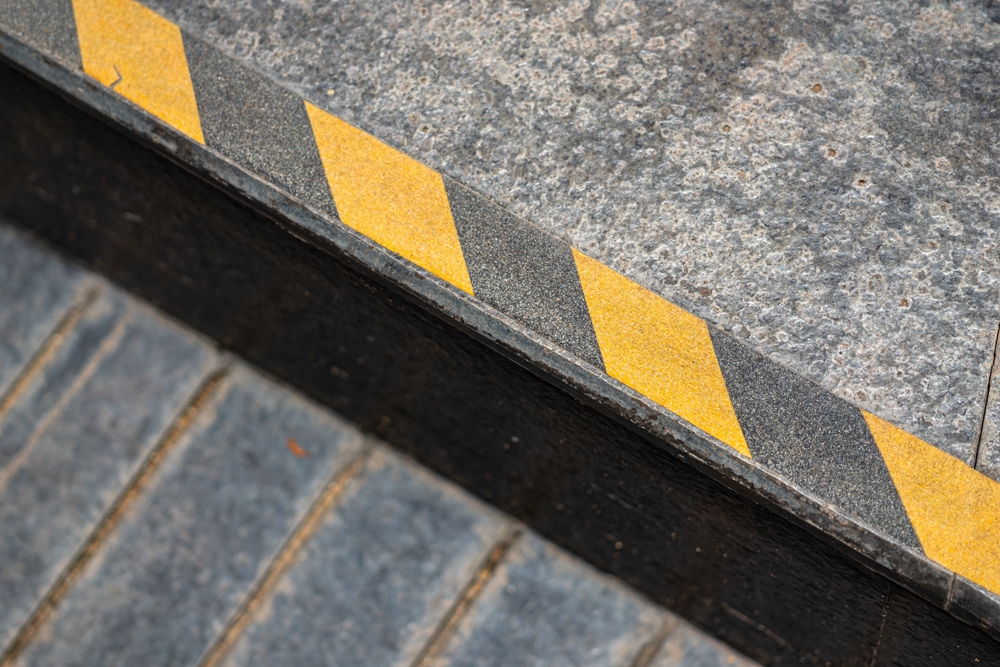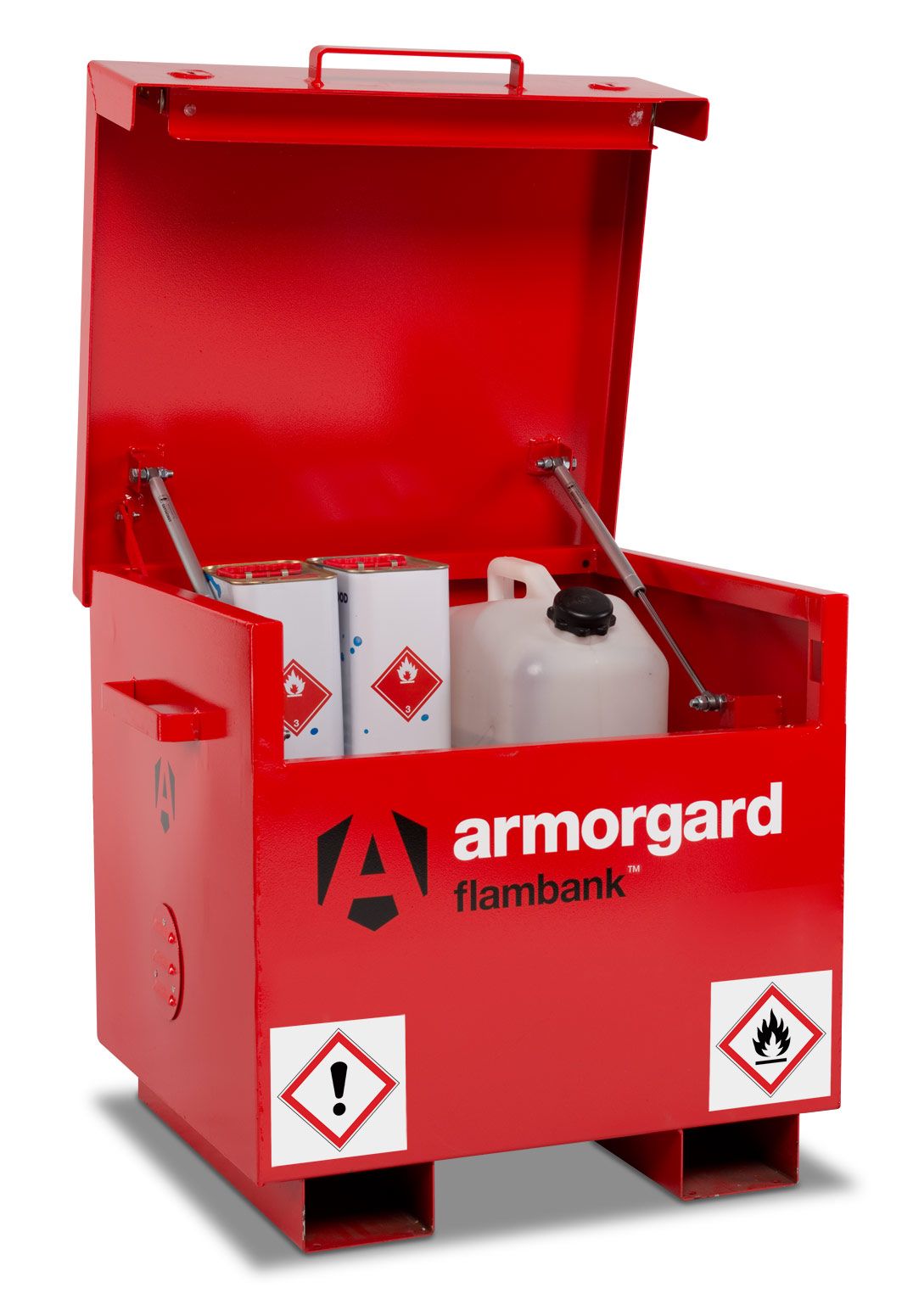Anti-slip flooring is often a vital part of a workplace's health and safety efforts. Whether there is a particular risk factor that makes slips and trips more likely, or if a business simply aims to reinforce health and safety and minimise the chances of an injury, installing anti-slip flooring can deliver slip resistance in high-traffic areas and significantly reduce the likelihood of an accident.
Installing anti-slip flooring is vital, as data from the Health and Safety Executive (HSE) shows that slips, trips and falls are the most common causes of non-fatal injuries in UK workplaces, with more than 18,500 such incidents reported in 2021/22. 30% of all accidents recorded under the Reporting of Injuries, Diseases and Dangerous Occurrences Regulations 2013 (RIDDOR) were slips, trips or falls during this period. In fact, the total number may be significantly higher. Some 61,713 accidents were reported under RIDDOR, but the total self-reported by workers in the Labour Force Survey rose as high as 565,000, suggesting that the real number of accidents could be almost ten times that figure.
These accidents are preventable when businesses meet the relevant HSE requirements and follow the relevant guidance. For many industries - including manufacturing, agriculture and others - this will include the use of non-slip flooring to combat specific risk factors. For example, workplaces that are exposed to the elements and inclement weather can become slippy, but safety flooring may from non-slip material will add the slip resistance needed to reduce the risk of injuries.
Here, the team at SafetyBuyer discusses the circumstances in which non-slip flooring is the perfect solution to address the risks of trips and falls, and explains the science behind the technology that makes anti-slip products so vital for health and safety compliance.
How does anti-slip flooring work?
Non-slip flooring works by increasing the level of friction between the floor surface and the sole of a shoe or foot. This is achieved through a combination of the materials used to make non-slip products, elements of their design, and treatments that they undergo to improve their slip resistance. Most non-slip flooring is made from glass-reinforced plastic (GRP) flooring sheets, or non-slip vinyl flooring sheets in some cases. They are designed with a specific texture to increase traction, which could be anything from an extra coarse, sandpaper-like finish to raised patterns that are designed to grip shoes. The grooves or patterns cut into the raised design of GRP flooring are effective for more than just grip - they channel away liquids, reducing the risk of slips
In some cases, special chemical coatings are applied to flooring to create a high-friction surface. A slip-resistant sealant might also be used to enhance the slip-resistant properties of this flooring. In other cases, floor surfaces are made from porous materials that absorb liquid and prevent it from sitting on top of the floor, where it can become slippery.
The added grip conferred by the design and materials of anti-slip sheet flooring makes it more difficult for someone to lose their footing and slip, even in circumstances where there are additional risks - such as spills of slippery substances or exposure to the weather. Thanks to this technological approach, slip-resistant flooring helps to minimise the risk of accidents and injuries due to slips and falls, making it a valuable component of any comprehensive safety strategy.
What are the biggest risk factors for slips and falls?
As a business, it is your responsibility to reduce the risk of accidents and injuries wherever possible. It is vital to recognise how common slips, trips and falls are and to take whatever steps you can to prevent them, as this is the only way to make your workplace as safe as possible. When performing a risk assessment, it is also crucial to understand the factors that can make an accident more likely, so that if any apply to your circumstances, you can take direct action to avoid this risk.
Factors that can make slips, trips and falls more likely to occur include:
-
Wet or slippery floors: spilled liquids and freshly mopped floors can create slip hazards.
-
Weather conditions: ice, snow, and rain can create slippery conditions outdoors.
-
Uneven surfaces: uneven or damaged flooring, carpeting, or mats can cause trips.
-
Clutter: objects left in walkways or work areas can be tripping hazards.
-
Poor lighting: insufficient lighting can make it difficult to see obstacles or uneven surfaces.
Flooring with slip-resistant properties can help to reduce the risk of any of these circumstances leading to an accident and an injury. However, there are other factors that need to be addressed in a different way.
Distractions like mobile phones or conversations can divert attention away from potential hazards and lead to accidents. In some cases, inappropriate footwear (such as shoes without proper grip) can contribute to slips, as can an overall failure to take care when walking in a hazardous area.
Addressing these risks sometimes means making organisational changes, such as providing safety training for employees who are required to work in areas where spills are likely. Your business must have measures in place to address spills and have enough wet-floor signs to mark any specifically hazardous areas - remember that you may have to deal with multiple spills at once.
Make sure workers understand the dangers that can arise when electrical cords and cables are left exposed, and when items are left to block walkways instead of being put away properly. It often takes a coordinated effort to minimise the risk of slips, trips and falls, and a comprehensive approach to designing and implementing safety policies. However, by meeting these obligations and maintaining compliance with HSE regulations at all times, you will be sure that you have done everything you can to prevent an injury.
Are there other applications for anti-slip flooring?
Preventing slips and trips is not the only application for anti-slip safety flooring. It may also be used to prevent machines from sliding around on hard floor surfaces, which is particularly useful in warehouses and other industrial settings. Heavy machinery is another common cause of serious injuries in UK workplaces, and if it is able to move around while in operation, this risk is significantly increased. By purchasing anti-slip flooring, you can make equipment safer to operate and cut down the risk of workers being injured.
As well as anti-slip flooring tiles, there is a range of complementary products that may help to improve your approach to safety, including floor marking tape to designate safe pedestrian routes through areas occupied by vehicle traffic, and stair nosings to prevent slips when travelling up and down stairs. These may be a vital way to maintain compliance with HSE regulations in some industries, so it is important to review the applicable guidance and determine which products you need to keep workers, visitors and members of the public safe while on your business' premises.
Browse the full range of non-slip flooring products from SafetyBuyer today, or if you have questions about a particular application, do not hesitate to get in touch with our team. Call us on 0800 043 0161 or email us at sales@safetybuyer.com to discuss your specific needs and receive tailored advice from our safety specialists.
 Over 12,000
Over 12,000  Simple no quibble
Simple no quibble  Prompt dispatch &
Prompt dispatch &  UK Mainland Delivery
UK Mainland Delivery 